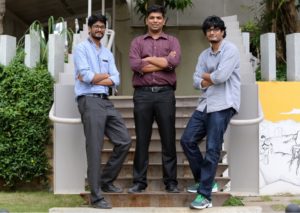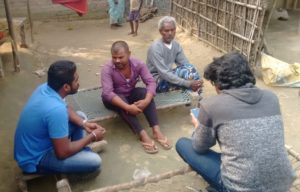Vishnu Raghunathan, CEO & Co-Founder, Lytyfy
Location: Addis Ababa, Ethiopia
“You have to really find quality products in a market which can be unfair.”
After college, Vishnu Raghunathan and S. Deepak Kumar spent more than two years working for the Bihar Rural Livelihoods Promotion Society, a government programme in India’s rural Bihar province. The experience taught them much about the lives of the region’s poor villagers, who often have no access to electricity and rely on kerosene for lighting. It also taught them the basics of microfinance, which was a focus of the programme they worked on.
Saddened by the sight of local families struggling to cook and study without electric lights, Raghunathan and Kumar looked for a way to help. Solar technology seemed the most appropriate solution, Raghunathan says, and in 2015 the two began experimenting with ways to implement their vision. The resulting company, Lytyfy, began operations in March 2016.

In its first year, Lytyfy tried two main types of solutions. The first involved simple solar lamps that villagers charged at a community charging station. That model ran into problems. Customers tended to blame any problems with the system on the owner of the charging station, and the dense social relationships that exist within villages got in the way.
The second model eschewed community-level services and sold technology to individual households instead. Each household got its own solar panel, two lights, and a charging station. “When we expanded the household system, everybody was willing to adopt it,” Raghunathan recalls.
The next problem was collecting payments. Not only were Lytyfy’s rural customers not used to paying for electricity; their agricultural professions meant that they earned far more in some months than in others. “The villagers clearly understood the need for electricity because their children needed light to study,” Raghunathan says. “But they were not willing to pay all at once. That’s when we decided to launch a microfinance project, with the option to pay monthly. Then the base expanded exponentially.”
Today, Lytyfy has eight employees—including separate teams for installation, customer service, and technology. The company currently brings in about US$50,000 a year in revenue from interest on loans and markup on product. Its loan portfolio is about US$20,000.

Lytyfy has installed about 500 solar systems so far, most of which cost between US$70 to US$80. That can be a lot of money for the company’s rural customer base to pay upfront, but Raghunathan says that the savings they earn from not purchasing kerosene makes up for the most of the cost of monthly installments.
In terms of impact, Raghunathan points to significant improvements in the lives of its customers, especially women and children. Each child with access to a Lytyfy system enjoys about three to four hours of electric light each night. And Lytyfy team members noticed that most families installed one of their two lights in the outdoor veranda where the cooking is done, allowing rural women to prepare food more quickly, precisely, and easily.
Lytyfy’s staff meets its customers where they are, visiting villages in person to install systems and to collect payments. “We understand that the customer—even if they only need to bring the product to a local town—it involves opportunity costs,” Raghunathan says. “It can take them two or three hours, which will waste their whole day. So we go there instead.”
Collecting payments in person has some advantages. It allows Lytyfy to make sure the customer is using the system properly, and to make any necessary repairs. It has also allowed the company to cultivate the expectation of high-quality service, which then helps to distinguish Lytyfy from its competitors.

However, repairs are necessary in only one out of every four cases, so an in-person visit is not always necessary. Raghunathan sees an opportunity to lower the cost per customer through mobile payments, especially as Lytyfy continues to scale up its business. While all payments are still being made in person today, Raghunathan says his team is currently being trained in the use of mobile payments and he expects to provide this option to customers soon.
When it comes to providing services to those who live in remote villages, Raghunathan says, distance is one of the main problems. “But with IT all these things can be provided at the doorstep. We need to develop systems that reduce the impact of distance.”
Lytyfy is already on its way to doing that in the area where it operates and is poised to scale up significantly in the years to come. In five to 10 years, Raghunathan says he’d like to see his company have more than one million customers.
–James Trimarco, Writer and Researcher, @jamestrimarco




